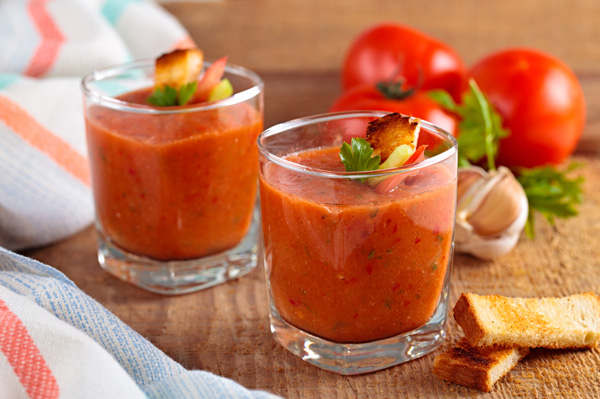Whether served in a glass or a bowl, gazpacho is a refreshing and healthy sip of summer.

Definition: a soup made of chopped tomatoes, cucumbers, onions, garlic, oil, and vinegar, and served cold.
Although there is a technical meaning to gazpacho, the term is now often used to refer to any cold soup in general.
Gazpacho hails from Andalusia, a region of Spain. The origin of the word “gazpacho” itself is up for debate – some say that it is an Arabic term for soaked bread.
Indeed, the original version of the soup was stale bread blended with olive oil and garlic, in conjunction with a water or vinegar pounded in a mortar.
Although it is difficult to pinpoint an exact date for the creation of gazpacho, the simpler, bread/oil/vinegar/garlic version appears to have originated somewhere during the 8th century, when the Ottomans and Moors came to the region.
Andalusia was primarily an agricultural area, where farm workers were given a certain amount of bread and oil. They combined their rations with the crops – olives and almonds – to create a cold soup, refreshing when working in hot fields.
It was not until Christopher Columbus brought back tomatoes and green peppers from the New World that gazpacho as we know it today began to be experimented with.
Today, gazpacho is often made as the definition describes it: with tomatoes, garlic, cucumbers, and oil. Often, green peppers are added as well. In addition, gazpacho can have a fruity undertone with some melon, or of course you can go spicy with jalapeno peppers.
Brian Yarvin, author of The Too Many Tomatoes Cookbook, says it always amazes him how many people won’t eat gazpacho ingredients in salad form, but will happily consume this chilled soup.
In addition to the fruity and spicy versions, there is also a “white gazpacho,” which typically eliminates the tomatoes and adds green grapes and leaks.